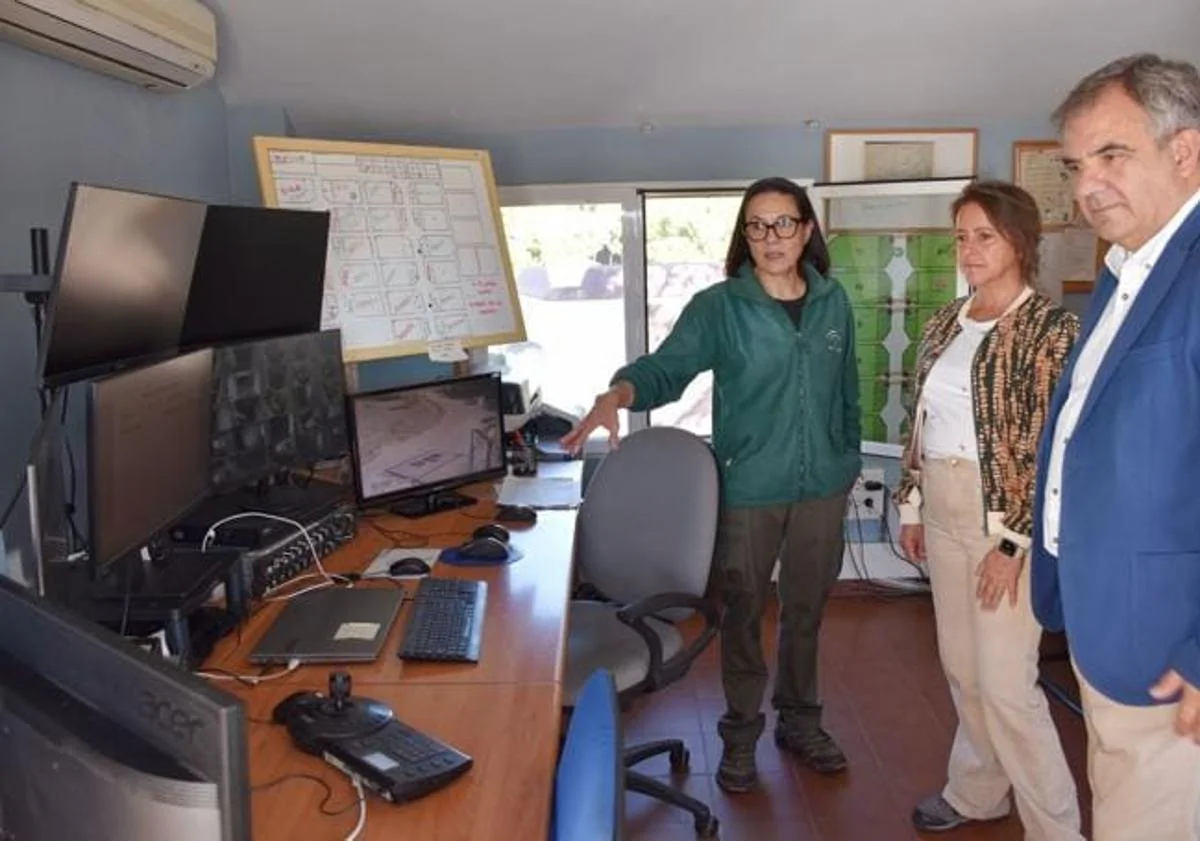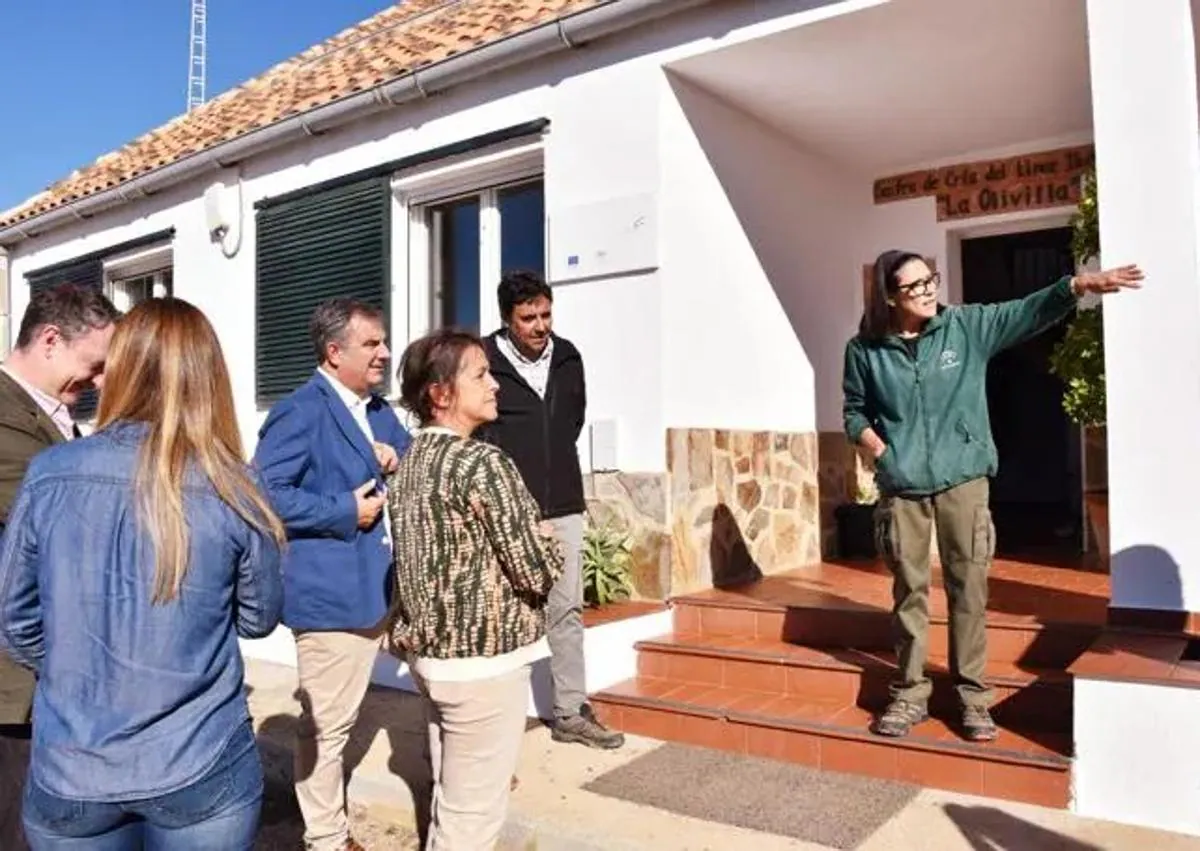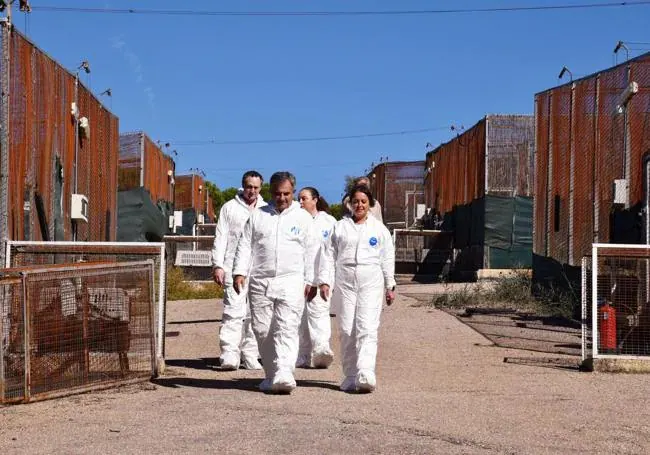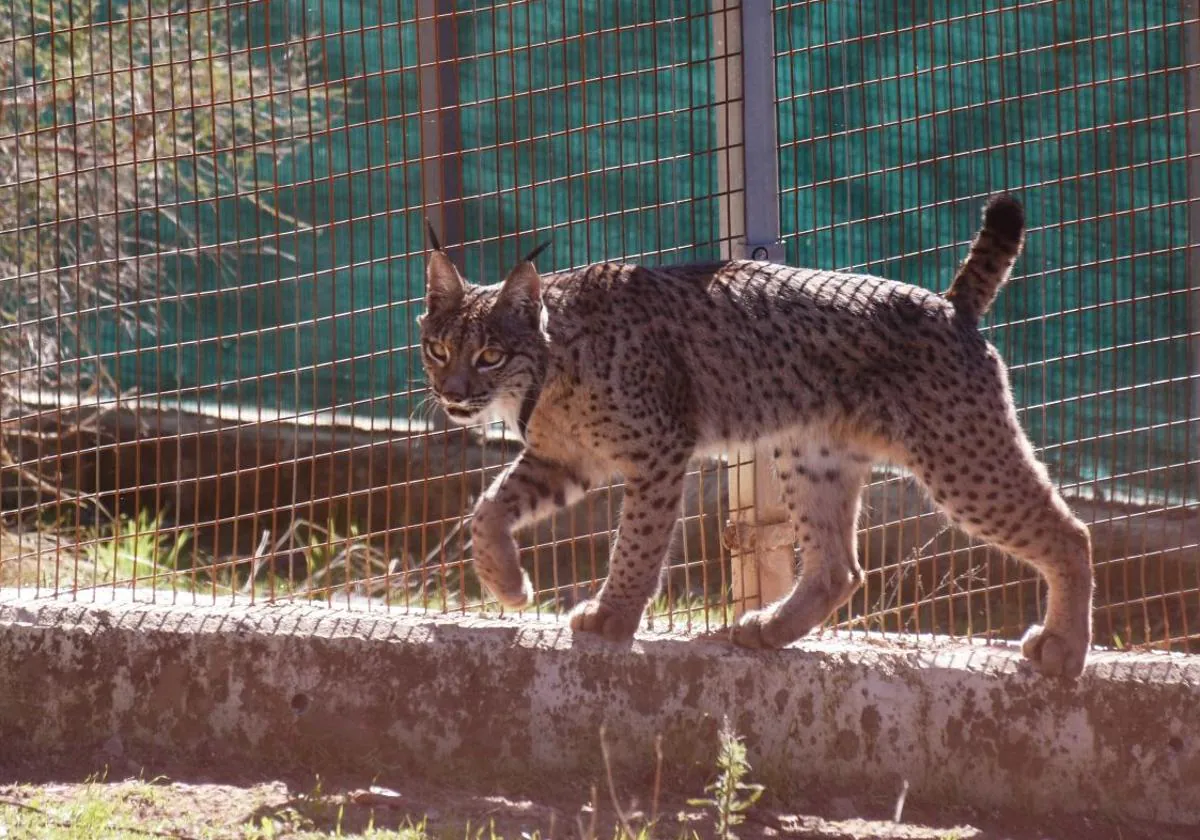Iberian lynx breeding centre in Andalucía has reintroduced 100 of the 'vulnerable' animals to the wild since it opened
The La Olivilla breeding centre in Santa Elena (Jaén) currently houses 42 specimens and has played an important role in the Life LynxConnect conservation programme
The Iberian lynx (Lynx pardinus) officially ceased to be an endangered species as of last June and is now classified as 'vulnerable'. It has taken more than 20 years, in which the Life LynxConnect programme, with an important presence in Jaen, has played an important role. Thus, for example, the breeding centre of La Olivilla in Santa Elena has managed to reintroduce 93 specimens into the wild since its opening in 2007, of which 90 were born in its facilities. The other three were rescued from the wild for different reasons, spending time at the centre until their release.
This was announced by Andalucía's regional minister for the environment, Catalina García, who visited La Olivilla on Monday with her regional ministerial counterpart for the Murcia region, Juan María Vázquez.
During all this time, the release of lynx has been carried out in selected areas across Andalucía, Murcia, Castile-La Mancha, Extremadura and Portugal. From 2019 to 2024, some 38 of the 56 specimens born at this centre have been reintroduced to their natural habitat.
Facilities
La Olivilla has 15 workers and 23 installations, which the ministers were shown by Javier Salcedo, coordinator of the Life LynxConnect project and centre director.
Each installation is around 1,250 square metres in size and includes several enclosures for breeding specimens and for training the older kittens to be released into the wild, as well as others that are used to temporarily house any caught in the wild that need care before a re-release.



It is a centre with facilities that blend into the natural environment surrounding it by filling the place with the local vegetation, together with five other buildings for the clinic-laboratory, administration offices, artificial breeding of kittens, quarantine and staff accommodation. In addition, on the hillside in front of the breeding facilities, there are three other, larger enclosures, with an average of 2,300 square metres, used to keep specimens taken from the wild before they are moved or reintroduced to the wild.
At present, there are 42 specimens in the centre of which 15 are males, 15 are females, three are adolescents - two females and one male - and nine are kittens - five are males and four are females.
Milestones
Among the most outstanding milestones of the last few years is the one that happened in 2022, the breeding season in which the pregnant female Cordoba went to full term and successfully gave birth to, and reared, her kitten at the ripe old age of 16, thereby becoming the longest-lived female in the lynx breeding programme to still be breeding.
In 2024, for the first time, a litter of orphaned kittens rescued from the wild was eventually released back into their natural habitat. Catalina García mentioned this saying: "that Nava, the female mother lynx of these kittens, is a unique story that highlights the work being done at the centre and in general within the Iberian lynx recovery plan of Andalucía."
Nava was sighted when pregnant in the first months of 2023 in the Montoro area in Cordoba province. On 17 March of that year she was run over and killed on the N-420 and, once it was confirmed that she had given birth, a search for her kittens was activated. Despite the relatively low success rate of such a device, Juno and Sky, from the canine unit specialised in searching for lynx tracks, managed to find Nava's four offspring.
Some words from the minister
Andalucía's regional minister stated that "several factors came into play in this case of success, on the one hand, the knowledge and experience of the technical specialists within the regional ministry's lynx recovery plan and, on the other, the canine unit itself, which had just finished its training and was facing its first real outing on duty, and which provided an extraordinary result."
García pointed out that Amaya's technicians (the regional government's environment agency) had located the dens used by the females to care for their young during their first months of life. She also pointed out that "constant follow-up is carried out and the activity they undertake is monitored."
"In this case, once they were located, the kittens were transferred to this centre in La Olivilla where they have been integrated into adoptive litters," she explained.
García underlined the "great efforts" that have been made for more than two decades. "The Andalusian government's commitment to the protection of the Iberian lynx as a sign of identity of our environmental heritage goes hand in hand with actions in favour of the conservation of its environment and the protection of biodiversity, but also in collaboration with other administrations, such as the regional government of Murcia."
Finally the regional minister emphasised the "fundamental collaboration that must be developed between the regions", what with Andalucía and Murcia being "partners in the Life LynxConnect Project, which is ensuring that the Iberian lynx population continues to grow."
The visit was also attended by various other dignitaries from both regional ministries for the environment and sustainability.

